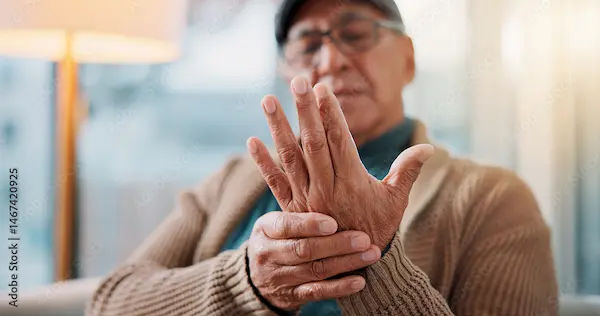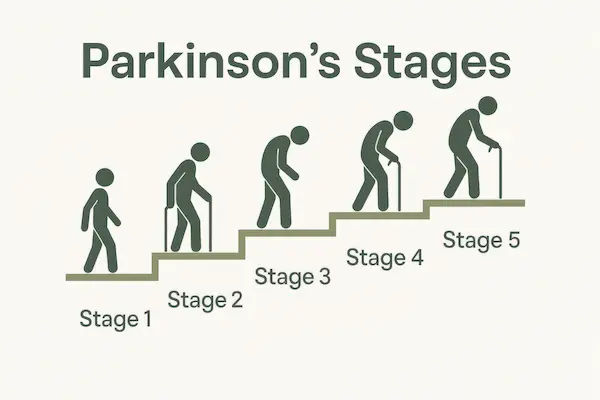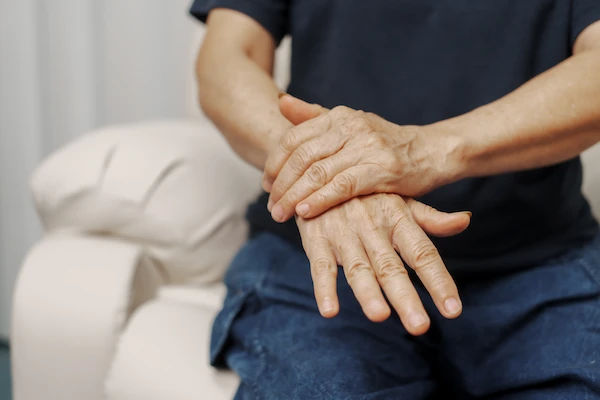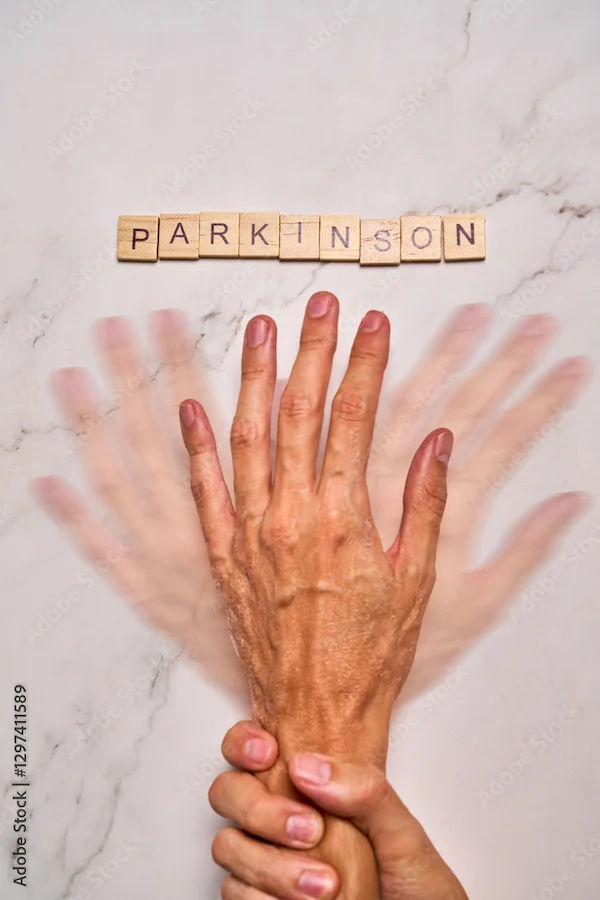Early Signs and Symptoms of Parkinson’s Disease
Learn to recognise the early signs and symptoms of Parkinson’s disease to ensure timely diagnosis and effective management.

Written by Dr. Md Yusuf Shareef
Reviewed by Dr. Rohinipriyanka Pondugula MBBS
Last updated on 30th Sep, 2025

Introduction
Parkinson's disease is often associated with a noticeable tremor. But what if the earliest warning signs are far more subtle and begin years, sometimes even decades, before that characteristic shake appears? Understanding these initial symptoms is crucial, as early detection can lead to more effective management and a better quality of life. This progressive nervous system disorder affects movement, but its reach extends much further, often starting with silent changes that are easy to dismiss as normal signs of aging or stress. This guide will walk you through the key early signs of Parkinson's disease, from the well-known motor symptoms to the lesser-known non-motor hints that your body might be sending. Our goal is to empower you with knowledge, so you can have an informed conversation with a healthcare professional if needed.
Understanding Parkinson's: More Than Just a Tremor
At its core, Parkinson's disease is a neurodegenerative disorder. This means it involves the gradual breakdown or death of nerve cells (neurons) in the brain. Specifically, it affects neurons in a region called the substantia nigra, which are responsible for producing dopamine. Dopamine acts as a chemical messenger, facilitating smooth, coordinated muscle movement. As these cells die, dopamine levels drop, leading to the movement-related symptoms of Parkinson's. However, scientists now know that the disease process likely begins in other parts of the brain and body long before it reaches the substantia nigra, which is why non-motor symptoms can be such early indicators.
The Cardinal Motor Signs: What Doctors Look For
Neurologists diagnose Parkinson's based on the presence of four primary motor symptoms, often called the "cardinal signs." The presence of at least two of these typically leads to a diagnosis.
Tremor: The Most Recognised Sign
The classic Parkinson's tremor is a "pill-rolling" rest tremor, where the thumb and forefinger rub together rhythmically, typically starting in one hand. Crucially, this shaking occurs when the muscle is relaxed and often decreases or stops with intentional movement. It's important to differentiate this from an essential tremor, which is an action tremor that happens when you're using your hands, like holding a cup. This is one of the most common very early symptoms of Parkinson's disease.
Bradykinesia: The Slowing of Movement
Bradykinesia, or slowness of movement, is often the most disabling aspect of the disease. It can manifest as general sluggishness, a decrease in automatic movements (like blinking or swinging your arms when you walk), or difficulty initiating movement, such as getting out of a chair. This can make simple tasks like buttoning a shirt or cutting food feel exhausting and time-consuming.
Limb Rigidity: Stiffness and Pain
Rigidity involves increased muscle stiffness that doesn't relax normally. A doctor testing for this might move your arm and feel a consistent resistance, sometimes described as "cogwheel" or "lead-pipe" rigidity. For the individual, this often translates into persistent stiffness, pain, or aching in the muscles and joints, which is frequently mistaken for arthritis or other orthopaedic issues.
Postural Instability: Issues with Balance
This symptom, which involves impaired balance and coordination, usually appears in the later stages of the disease. However, a slight tendency to feel unsteady or a reduced ability to make quick, corrective movements to prevent a fall can be an earlier hint.
Consult a Neurologist for the best advice
The Silent Harbingers: Early Non-Motor Symptoms
Years before motor symptoms become apparent, many people experience subtle changes unrelated to movement. Recognising these Parkinson's disease first signs can be key to early intervention.
Loss of Smell (Hyposmia): An Early Red Flag
A diminished ability to smell strong odors like bananas, dill pickles, or licorice is one of the most common and earliest signs, potentially appearing up to 10 years before motor symptoms. If you find yourself struggling to detect scents that others can smell easily, it's a symptom worth noting.
Sleep Disorders: Thrashing and Talking
While occasional restlessness is normal, a condition called REM sleep behavior disorder (RBD) is a significant predictor. People with RBD act out their dreams; they may shout, thrash, or punch in their sleep. This is different from simple sleep talking or walking and is a strong early sign of Parkinson's disease.
Constipation and Digestive Issues
The same abnormal protein deposits (Lewy bodies) that damage brain cells in Parkinson's are also found in the nerves that control the gut. This can lead to slowed digestion and chronic constipation, often one of the very first symptoms.
Mood Changes: Anxiety and Depression
Depression and anxiety are not just reactions to a diagnosis; they are core symptoms of the disease process itself, caused by changes in brain chemistry. They can be among the earliest manifestations, so persistent low mood or anxiety should be discussed with a doctor.
Subtle Changes in Daily Life
Beyond the clinical signs, Parkinson's can alter everyday abilities in small but noticeable ways.
Micrographia: When Handwriting Shrinks
A change in handwriting, specifically letters becoming progressively smaller and more crowded, is a classic sign of bradykinesia and muscle control issues.
A Soft or Monotone Voice
Changes in speech, such as speaking more softly (hypophonia), in a monotone, or with a hoarse quality, can be early indicators. The person may not even realise their voice has changed.
Masked Face (Hypomimia)
This refers to a reduced range of facial expressions, making a person appear serious, depressed, or blank, even when they are engaged in conversation. It's caused by stiffness in the facial muscles.
When Should You Be Concerned? Differentiating from Normal Aging
It's normal to move a little slower or feel stiff after sitting for a long time as we age. The key differentiator for signs of Parkinson's in elderly individuals is progression and combination. An occasional tremor from caffeine or a stiff shoulder from gardening is usually not a cause for alarm. However, you should be concerned if:
• Symptoms are persistent and gradually worsening.
• You experience a combination of symptoms (e.g., slight tremor + loss of smell + constipation).
• Symptoms are predominantly one-sided, which is typical of early Parkinson's.
• They interfere with your daily activities and quality of life.
What to Do If You Notice Early Signs
If you or a loved one are experiencing a cluster of these symptoms, the most important step is not to panic but to take action.
The Importance of a Neurological Evaluation
Schedule an appointment with your primary care doctor and discuss your concerns. They will likely refer you to a neurologist, a specialist in disorders of the brain and nervous system. There is no single test for Parkinson's; diagnosis is based on medical history, a neurological exam, and sometimes a response to Parkinson's medication. If symptoms persist or cause you concern, consulting a neurologist online with Apollo24|7 for an initial evaluation can be a convenient first step.
Conclusion
Recognising the early signs of Parkinson's disease is the first step toward taking control of your health journey. While this list of symptoms can be alarming, it's essential to remember that experiencing one or two in isolation does not mean you have Parkinson's. However, being aware of your body and noticing persistent, progressive changes, especially in combination, is vital. This knowledge empowers you to have a proactive and detailed conversation with a healthcare professional. An early and accurate diagnosis opens the door to effective treatment strategies, lifestyle adjustments, and support systems that can significantly slow the progression of symptoms and maintain a high quality of life for years to come. Your health is in your hands; use this information as a tool for proactive care.
Consult a Neurologist for the best advice
Consult a Neurologist for the best advice

Dr. Jered Livingstone
Neurologist
8 Years • MBBS, M.D.,(Med)., DM (Neuro)
Chennai
Apollo Hospitals Tondiarpet, Chennai

Dr Justin Thomas
Neurologist
10 Years • MD DM NEUROLOGY
Bhopal
Apollo Sage Hospitals, Bhopal

Dr. Andugulapati Santosh Sriram
Neurologist
6 Years • MBBS, MD, DM (NEUROLOGY)
Hyderguda
Apollo Hospitals Hyderguda, Hyderguda

Dr. Devashish Vyas
Interventional Neurologists
8 Years • MD (Medicine), DNB (Neurology), FNVI
Ahmedabad
Apollo Hospitals Gandhinagar, Ahmedabad

Dr. Gangula Charvitha Reddy
Neurologist
6 Years • MBBS, MD DM NEUROLOGY, SCE NEUROLOGY ( RCP-UK).
Hyderabad
Apollo Hospitals D R D O kanchanbagh, Hyderabad
Consult a Neurologist for the best advice

Dr. Jered Livingstone
Neurologist
8 Years • MBBS, M.D.,(Med)., DM (Neuro)
Chennai
Apollo Hospitals Tondiarpet, Chennai

Dr Justin Thomas
Neurologist
10 Years • MD DM NEUROLOGY
Bhopal
Apollo Sage Hospitals, Bhopal

Dr. Andugulapati Santosh Sriram
Neurologist
6 Years • MBBS, MD, DM (NEUROLOGY)
Hyderguda
Apollo Hospitals Hyderguda, Hyderguda

Dr. Devashish Vyas
Interventional Neurologists
8 Years • MD (Medicine), DNB (Neurology), FNVI
Ahmedabad
Apollo Hospitals Gandhinagar, Ahmedabad

Dr. Gangula Charvitha Reddy
Neurologist
6 Years • MBBS, MD DM NEUROLOGY, SCE NEUROLOGY ( RCP-UK).
Hyderabad
Apollo Hospitals D R D O kanchanbagh, Hyderabad
More articles from Parkinsons Disease
Frequently Asked Questions
1. What is the difference between essential tremor and Parkinson's tremor?
Essential tremor is typically an action tremor; it occurs when you're using your hands, like holding a cup or writing. A Parkinson's tremor is a rest tremor; it happens when the muscle is relaxed and often subsides when you initiate movement. Parkinson's tremor is also often accompanied by other symptoms like stiffness and slowness.
2. Can you have Parkinson's without a tremor?
Yes. A form of Parkinson's called 'akinetic-rigid' Parkinson's is dominated by slowness (bradykinesia) and stiffness (rigidity) without a significant tremor. This can sometimes make diagnosis more challenging.
3. What are the very first signs of Parkinson's disease?
Often, the very first signs are non-motor symptoms like a loss of smell (hyposmia), severe constipation, REM sleep behavior disorder (acting out dreams), and unexplained anxiety or depression. These can appear years or even decades before motor symptoms.
4. At what age does Parkinson's disease usually start?
While the average age of onset is around 60, about 5-10% of people experience 'young-onset' Parkinson's, which begins before the age of 50. It can even rarely occur in younger adults.
5. If Parkinson's runs in my family, will I get it?*
Most cases of Parkinson's are 'idiopathic,' meaning they occur sporadically with no clear genetic cause. Only about 10-15% of cases have a known genetic link. Having a relative with Parkinson's slightly increases your risk, but it is not a certainty.




